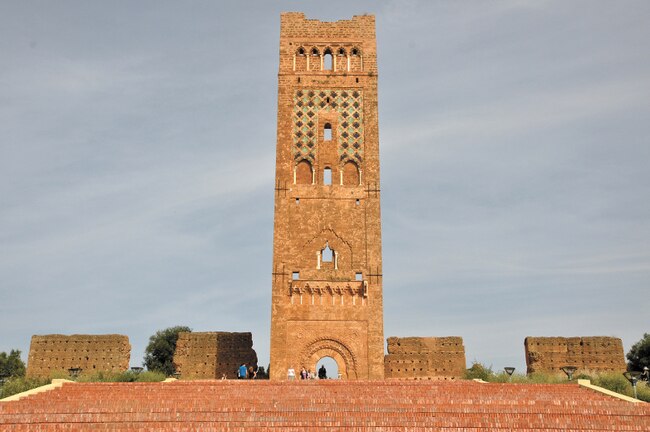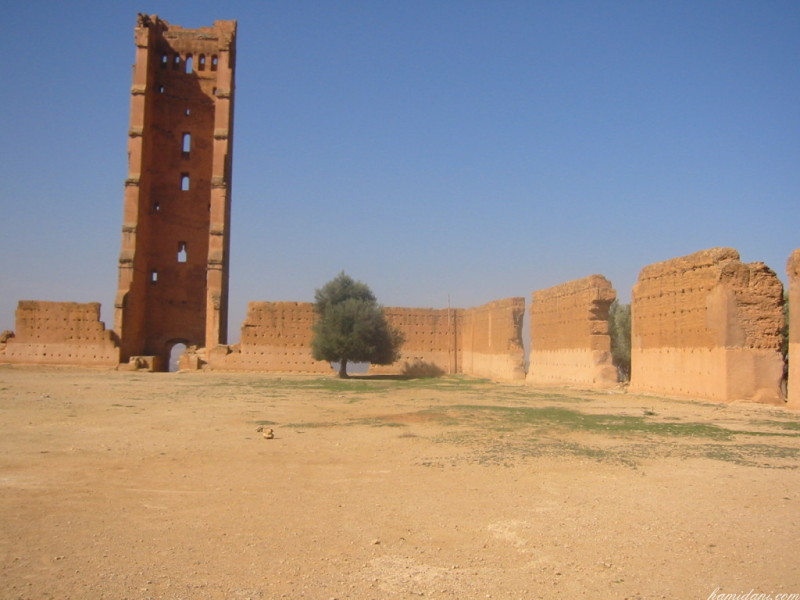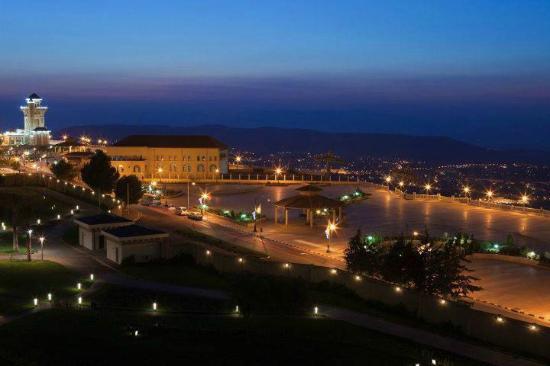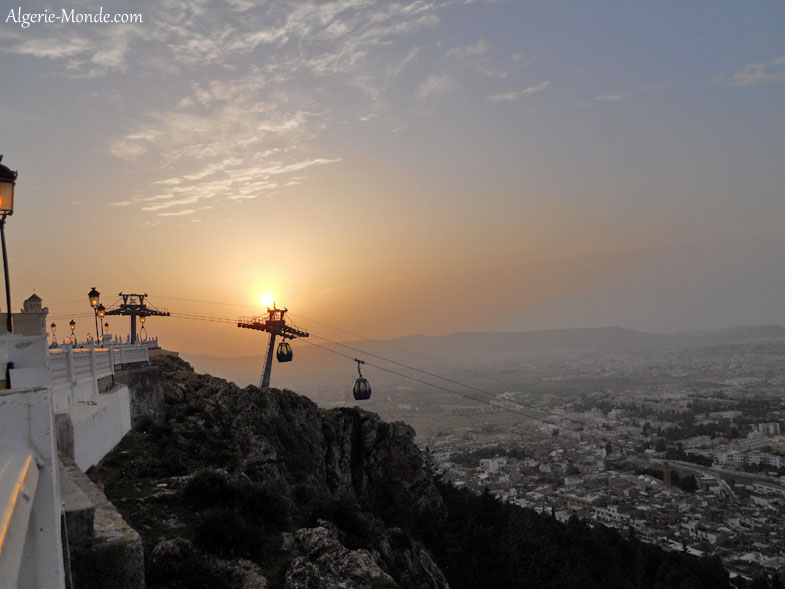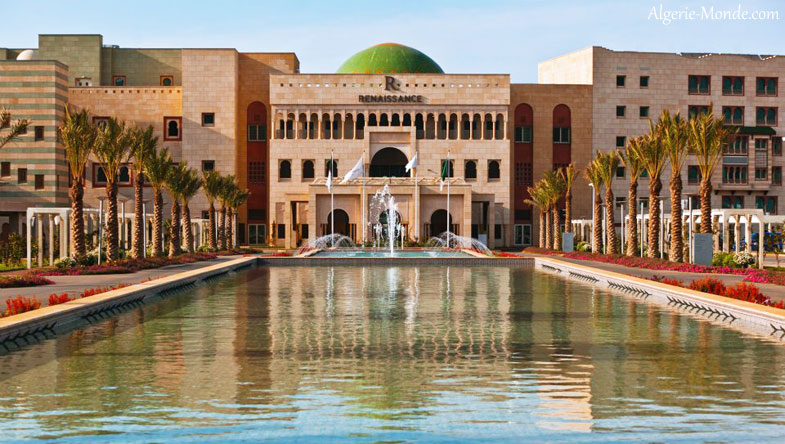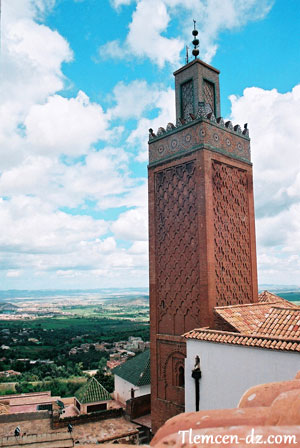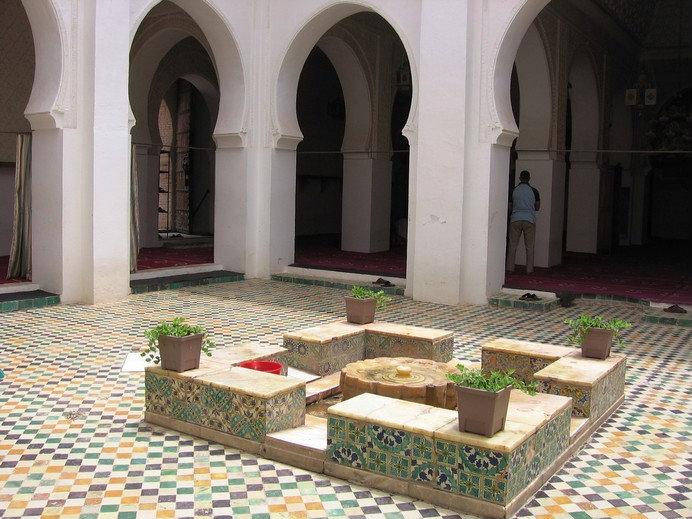1- Getting to Tlemcen:
By Plane:
Airlines operating between foreign and Tlemcen are Air Algeria and Aigle Azur. Airports served abroad are airport Les quin, Paris-Orly and Marseille.
The domestic air network is sufficiently developed, the major cities are served daily by the National Air Algeria Company.
By Boat
Tlemcen with no opening to the sea, maritime transport port nearest the passenger Ghazaouet.
The maritime connections between the port of Ghazaouet and port of Almeria (Spain) are provided by the Trans-Mediterranean company.
By Train:
The city of Tlemcen is connected by rail to cities Ghazaouet Maghnia and Oran.
By Car
You can go to Tlemcen by car from Europe via Spain or France (transport by boat). Also possible to get to by car Tlemcen in Algeria entering from Tunisia, Libya, Mauritania, Mali and Niger.
The land border between Morocco and Algeria is closed, it is impossible to cross by car (the only solution is to fly). Algerian road network is one of the largest in Africa and you will find no difficulty to move within the country whether by car, bus, taxi.
2-The Place to Visit:
The Remains of Mansura, Tlemcen:
The historical site of Mansura is a place to visit during your visit to Tlemcen. Currently there are only the northern and western parts of the walls and the mosque.
The walls, a development of about four meters, delineated an area of 100 ha. Mud, thick and 1.50 m high by 12 m, flanked by 80 towers, they have nearly disappeared in the east and south.
Mansura mosque was built around 1303 by Sultan Abu Yacoub. At his death the construction is suspended and will resume when the year 1336.
Citadel El Méchouar, Tlemcen
The main entrance to the citadel is located Méchouar El Commandant Ferradj street.
The citadel built in 1145 Méchouar El Abd El Moumen Ben Ali of Almohad dynasty was a place of Almoravide military camp during the week siege by the middle of the eleventh century. Yaghmoracen Ibn Ziane founder of the dynasty left el Qasr el Qadim, it transferred his residence in this place became the seat of the kings Zianides (beni Abdeloued) at the end of the thirteenth century.
His successors erected mosque, palace (Dar el Mulk, Essourour Dar Dar Abi Fihr, Dar el Abu Tachefine). The enclosure was built later by the 13th ruler, Ahmed Abu el Abbas. Citadel and garrison under the Turks, it became a refuge for families in 1670 couloughlis The French troops entered the citadel in 1836.
After the Treaty of Tafna, Emir Abdelkader occupied it between 1836 and 1837 was reoccupied by the French military in 1842, a few years after they began to raze the palace Méchouar who survived and aménagèrent barracks.
The Citadel is imposing its unique structure; its east side, seemingly high, rests on a hill overlooking the neighborhoods' Hawma "of Mellala and Rhiba and other areas of low, overlooking the plain of the North East. As for the North and Northwest sides, they were drawn along the water layer.
The main door was probably a drawbridge called Bab El Bounoude. It is clear in the South, the walls are high on the outside compared to the ground level, which with time and embankments, won a remarkable rise from its current level.
This monument, during the long reign Ziyanid has expanded greatly, transformations and enhancements in several stages by a variety of buildings, outbuildings and other ancillary buildings such as two Bastions Style Ziyanid round columns that continue to this days.
Despite the destruction of the large building by colonization and all the walls east, where the current Mustapha neighborhood, space is still very impressive.
Mechouar, famous citadel, gained fame and played a key role in all fields: political, social, military and others. Worthy of its etymology, "The Place of Mouchawara" or advisory boards, he was still the residence of the central government.
Again, it must research to inform its proper role. Configuration, continues to gradually degrade by indifference to its prestigious past. The remains of a royal palace just seen the day after digging the ground. Leave traces appear splendid mosaics and small ornate marble basins along.
The walls of the top indicate the presence of art Andalou (Cordoba) through fragments of decoration. All refined masterpiece was disfigured to serve after his dismemberment, vulgar dependencies Méchouar as a colonial barracks.
All of its interior works was destroyed, except for its minaret and its Mosque which, in turn, was converted into a chapel.
In 1942, this was a premeditated act of desecration decided by the French military engineering: to thin out the walls of their natural plastering, so that he had all the charm of its historic setting and only accentuated the perspective discrediting their authors.
In this global destruction, only a small strip from the top of two famous round towers and part of the walls jealously guard their original coating. They are visible in front of the hotel Maghreb at the height of the old street of Sidi Bel Abbes.
Previously available barricades and niche off a highly artistic symmetry inspired aesthetics Andalusian. His identity is recognizable on the walls of old Cordoba. The act in question was dictated by intentions denaturalization.
Plateau Lalla Setti Tlemcen:
Major destination during your visit to Tlemcen Plateau Lalla Setti overlooking the city of Tlemcen to 1000 meters offering breathtaking panoramic views of the entire city of Tlemcen.
Plateau Lalla Setti is connected to the city center of Tlemcen by a recently completed cable. This means of air transport through the city of Tlemcen from the Great Basin to the terminus of the plate. For a bargain price of 20 DA, this modern equipment can transported until 2000 passengers / hour to the new waterfront perched at 1000 meters altitude.
At Lalla Setti is including our recently Mujahid museum, an amusement park, the 5-star Renaissance hotel, an artificial lake fed naturally composed of two basins separated by a ford is equipped with paddle boats that delight children .
Not far from the tray is the forest of the Little partridge to the delight of hikers.
Bab El Karmadine Tlemcen:
Bab El Karmadine, also called Gate Tuiliers is one of the remains of the walls of Tlemcen located at the Independence Avenue. This monument is famous in Tlemcen for it is here that Yaghmoracen has escaped being murdered by the leader of his Christian care ...
Sidi Boumediene Mosque of Tlemcen:
Mosque Sidi Boumediene is located in the El Eubbad neighborhood mosque was built in 1339 (739 AH) by Merinid Sultan Abu Hassan Ali said "black sultan."
The tomb of Saint Sidi Boumediene is close, forming a complex of such a madrasah built in 1347, a small palace (Dar Es Sultan), a zaouia, steam room and latrines from the same time.
Source:Tourisme Tlemcen.
See Also: Tourism in Tlemcen Part 2
Airlines operating between foreign and Tlemcen are Air Algeria and Aigle Azur. Airports served abroad are airport Les quin, Paris-Orly and Marseille.
The domestic air network is sufficiently developed, the major cities are served daily by the National Air Algeria Company.
By Boat
Tlemcen with no opening to the sea, maritime transport port nearest the passenger Ghazaouet.
The maritime connections between the port of Ghazaouet and port of Almeria (Spain) are provided by the Trans-Mediterranean company.
By Train:
The city of Tlemcen is connected by rail to cities Ghazaouet Maghnia and Oran.
By Car
You can go to Tlemcen by car from Europe via Spain or France (transport by boat). Also possible to get to by car Tlemcen in Algeria entering from Tunisia, Libya, Mauritania, Mali and Niger.
The land border between Morocco and Algeria is closed, it is impossible to cross by car (the only solution is to fly). Algerian road network is one of the largest in Africa and you will find no difficulty to move within the country whether by car, bus, taxi.
 |
| Tlemcen Internation Airport |
2-The Place to Visit:
The Remains of Mansura, Tlemcen:
The historical site of Mansura is a place to visit during your visit to Tlemcen. Currently there are only the northern and western parts of the walls and the mosque.
The walls, a development of about four meters, delineated an area of 100 ha. Mud, thick and 1.50 m high by 12 m, flanked by 80 towers, they have nearly disappeared in the east and south.
Mansura mosque was built around 1303 by Sultan Abu Yacoub. At his death the construction is suspended and will resume when the year 1336.
The mosque occupies a rectangle 60 meters wide and 86 meters long. The main mosque is entered at the base of the minaret. The yard is 30 square meters per side. The walls of 1.50 m thick are made of pink siliceous stone.
Citadel El Méchouar, Tlemcen
The main entrance to the citadel is located Méchouar El Commandant Ferradj street.
The citadel built in 1145 Méchouar El Abd El Moumen Ben Ali of Almohad dynasty was a place of Almoravide military camp during the week siege by the middle of the eleventh century. Yaghmoracen Ibn Ziane founder of the dynasty left el Qasr el Qadim, it transferred his residence in this place became the seat of the kings Zianides (beni Abdeloued) at the end of the thirteenth century.
His successors erected mosque, palace (Dar el Mulk, Essourour Dar Dar Abi Fihr, Dar el Abu Tachefine). The enclosure was built later by the 13th ruler, Ahmed Abu el Abbas. Citadel and garrison under the Turks, it became a refuge for families in 1670 couloughlis The French troops entered the citadel in 1836.
After the Treaty of Tafna, Emir Abdelkader occupied it between 1836 and 1837 was reoccupied by the French military in 1842, a few years after they began to raze the palace Méchouar who survived and aménagèrent barracks.
The Citadel is imposing its unique structure; its east side, seemingly high, rests on a hill overlooking the neighborhoods' Hawma "of Mellala and Rhiba and other areas of low, overlooking the plain of the North East. As for the North and Northwest sides, they were drawn along the water layer.
The main door was probably a drawbridge called Bab El Bounoude. It is clear in the South, the walls are high on the outside compared to the ground level, which with time and embankments, won a remarkable rise from its current level.
This monument, during the long reign Ziyanid has expanded greatly, transformations and enhancements in several stages by a variety of buildings, outbuildings and other ancillary buildings such as two Bastions Style Ziyanid round columns that continue to this days.
Despite the destruction of the large building by colonization and all the walls east, where the current Mustapha neighborhood, space is still very impressive.
Mechouar, famous citadel, gained fame and played a key role in all fields: political, social, military and others. Worthy of its etymology, "The Place of Mouchawara" or advisory boards, he was still the residence of the central government.
Again, it must research to inform its proper role. Configuration, continues to gradually degrade by indifference to its prestigious past. The remains of a royal palace just seen the day after digging the ground. Leave traces appear splendid mosaics and small ornate marble basins along.
The walls of the top indicate the presence of art Andalou (Cordoba) through fragments of decoration. All refined masterpiece was disfigured to serve after his dismemberment, vulgar dependencies Méchouar as a colonial barracks.
All of its interior works was destroyed, except for its minaret and its Mosque which, in turn, was converted into a chapel.
In 1942, this was a premeditated act of desecration decided by the French military engineering: to thin out the walls of their natural plastering, so that he had all the charm of its historic setting and only accentuated the perspective discrediting their authors.
In this global destruction, only a small strip from the top of two famous round towers and part of the walls jealously guard their original coating. They are visible in front of the hotel Maghreb at the height of the old street of Sidi Bel Abbes.
Previously available barricades and niche off a highly artistic symmetry inspired aesthetics Andalusian. His identity is recognizable on the walls of old Cordoba. The act in question was dictated by intentions denaturalization.
Plateau Lalla Setti Tlemcen:
Major destination during your visit to Tlemcen Plateau Lalla Setti overlooking the city of Tlemcen to 1000 meters offering breathtaking panoramic views of the entire city of Tlemcen.
Plateau Lalla Setti is connected to the city center of Tlemcen by a recently completed cable. This means of air transport through the city of Tlemcen from the Great Basin to the terminus of the plate. For a bargain price of 20 DA, this modern equipment can transported until 2000 passengers / hour to the new waterfront perched at 1000 meters altitude.
At Lalla Setti is including our recently Mujahid museum, an amusement park, the 5-star Renaissance hotel, an artificial lake fed naturally composed of two basins separated by a ford is equipped with paddle boats that delight children .
Not far from the tray is the forest of the Little partridge to the delight of hikers.
Bab El Karmadine Tlemcen:
Bab El Karmadine, also called Gate Tuiliers is one of the remains of the walls of Tlemcen located at the Independence Avenue. This monument is famous in Tlemcen for it is here that Yaghmoracen has escaped being murdered by the leader of his Christian care ...
Sidi Boumediene Mosque of Tlemcen:
Mosque Sidi Boumediene is located in the El Eubbad neighborhood mosque was built in 1339 (739 AH) by Merinid Sultan Abu Hassan Ali said "black sultan."
The tomb of Saint Sidi Boumediene is close, forming a complex of such a madrasah built in 1347, a small palace (Dar Es Sultan), a zaouia, steam room and latrines from the same time.
Source:Tourisme Tlemcen.
See Also: Tourism in Tlemcen Part 2
